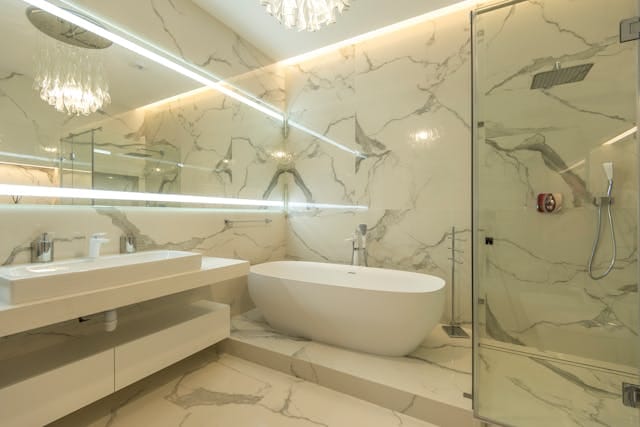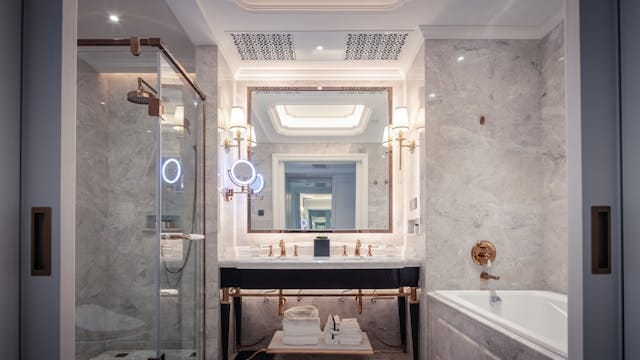Let’s talk about something no one really wants to deal with—but absolutely has to at some point: shower replacement costs. Yeah, I get it. It’s not as exciting as picking paint colors or deciding between matte black and brushed nickel fixtures. But if you’re not paying attention here, you could be flushing money down the drain—literally.
So grab your coffee, kick back, and let’s break it down Chip Gaines-style: practical, to the point, and with a little bit of friendly advice you didn’t know you needed.
💸 First Things First: What Should a Shower Replacement Actually Cost?
On average, replacing a shower costs anywhere from $1,500 to $8,000, but I’ve seen projects hit $10,000+ without blinking. Why the big range? Because “shower replacement” can mean a lot of different things depending on your home, your goals, and let’s be honest—your taste.
Here’s a quick price snapshot:
Prefab shower kit: $1,000–$2,500
Mid-range tile job: $3,000–$5,000
Custom luxury build: $6,000–$10,000+
But here’s the kicker—you might be paying more than you need to. And that’s where things get interesting.
⚠️ Are You Paying for Stuff You Don’t Need?
Let me hit you with a hard truth: homeowners often overpay for shower replacements because they don’t know where the money’s actually going.
Here are a few hidden renovation fees that sneak into your quote:
Permits & inspections – Sometimes required, sometimes overkill.
Demo surprises – That “little leak” behind your old tile? Could cost you extra.
Custom vs. standard sizing – Custom looks great, but that price tag? Yikes.
Designer finishes – Beautiful, but budget-busting if you’re not careful.
Relocating plumbing – Doable, but expensive. If your shower’s fine where it is, keep it there.
It’s kind of like buying a truck with every add-on imaginable when all you really needed was something to haul mulch on weekends.
🧱 What Are You Really Paying For?
Here’s the honest breakdown of where your money usually goes:
Materials – Tile, base, walls, doors, fixtures.
Labor – Demo, prep, plumbing, installation, sealing, and cleanup.
Disposal – Yep, tossing out your old shower has a price.
Waterproofing – Crucial, and where you do not want to cut corners.
Project management – If someone’s overseeing the job, you’re paying for their time too.
Knowing this helps you figure out where you can save—and where you shouldn’t skimp.
💡 Want to Save Money? Here’s How
Don’t worry—I’m not gonna tell you to grab a sledgehammer (unless you want to). But here are some smart ways to keep costs in check without sacrificing quality:
Stick to standard sizes
Custom means custom pricing. Standard units often look great and cost a lot less.Avoid moving plumbing
Unless it’s necessary, keep pipes where they are. Moving them can blow your bathroom remodel budget wide open.Use large tiles or panels
Bigger pieces = less grout, less labor, fewer chances for leaks.Get multiple quotes
Don’t just go with the first contractor who calls you back. Three bids minimum!Bundle your upgrades
If you’re doing more than just the shower, combining jobs can sometimes save on labor and logistics.
🛑 Don’t Let Emotions Blow Your Budget
Look, I love a gorgeous bathroom as much as the next guy—but emotion can be a real budget killer. That imported tile? Stunning. But does it really bring $30 per square foot of joy? Be honest with yourself about what really matters. Focus on function first, then add the flair.
🏠 Does a New Shower Add Value to My Home?
You bet. Bathrooms are one of the top places buyers look, and an outdated, grungy shower can tank your first impression. A fresh, modern shower can increase home appeal and get you 60–70% ROI on the cost when it’s time to sell. But remember—over-improving can backfire, especially if you’ve got a mid-range home in a modest neighborhood.
🧼 Final Rinse: What You Really Need to Know
If you’re replacing your shower, here’s the no-nonsense summary:
Know what you’re paying for
Watch out for hidden renovation fees
Don’t be afraid to question the quote
Smart choices = better budget control
You don’t have to go fancy to go functional
Bottom line? Shower replacement costs don’t have to drain your wallet. Be informed, be strategic, and don’t be afraid to ask tough questions. That’s how you get the most bang for your buck—without sacrificing quality.
🚀 Time to Upgrade?
If your shower’s looking tired, leaky, or stuck in a different decade, it’s probably time to act. But don’t go it alone. A trusted, experienced team can help you plan smart, spend wisely, and create a space that works for your life—not just your Pinterest board.

